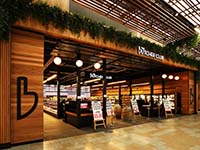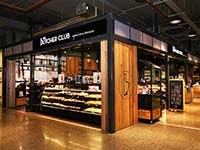Coolrooms are cold storage areas that can store a wide array of products and preserve their overall quality. They are comprised of cooling components to make sure that the interiors can retain low temperatures regardless of the outdoor temperatures.
Many products can be stored inside the coolrooms. Most food businesses, for instance, use coolrooms to store different types of foods and drinks. They can store meat, fruits, vegetables, and seafood. Coolrooms, however, can also be used in storing flowers, chemicals, and other delicate and sensitive items.
To keep coolrooms operational, business owners have to make sure that they are cleaned and serviced regularly. They should also be inspected from time to time to effectively detect any issues that they may develop as time passes.
Mould is a Common Problem with Coolrooms
Coolrooms may have been inspected and cleaned very well. However, without checking their components, they might allow elements to enter and accumulate inside, which may lead to the growth and spread of mould spores.
Moulds can develop inside the coolrooms if these places do not utilise enough lighting. Coolrooms may also be bombarded with mould once their surfaces become too damp and too cold. With a cold, dark, and damp environment, mould elements can easily grow anywhere and spread across the surfaces of the coolrooms. Without mitigating the spread and growth of moulds, they can eventually reach the storage areas of the products and affect their overall quality. Worse, they may contaminate the items, which leads to product losses.
As the spread of moulds continues, they may eventually reach outside the coolrooms, which can damage the properties significantly. The increase of mould elements inside the coolrooms and their surroundings can then cause mould allergies and respiratory issues to spread to employees and other people inside.
Deter Moulds from Destroying Your Coolroom
If you are currently managing a coolroom for your business, you must make sure that moulds will be prevented from destroying its structural components and stored products.
As mentioned earlier, a damp, dark, and cold environment allow moulds to develop and spread continuously. By changing the overall conditions of your coolroom, you can expect moulds to be out of your cold storage solution.
One thing that you can do to deter moulds from destroying your coolroom is to check the seals of your coolroom door. If you spot some broken or cracked seals, you must have them replaced right away. Failure to replace them will only allow warm air to enter, which can generate condensation on the walls and ceilings until mould starts to grow. The door must also be closed at all times to prevent damaging your coolroom.
Moulds in your coolroom can also be prevented if you will be storing your items properly. Proper storage of items inside your coolroom can ensure that its cooling mechanisms can work optimally. Avoid blocking the fans or blowers so that the cold air can circulate in your coolroom. One more thing that should be done to keep your coolroom free from moulds is to repair components that are leaking. Repairing them can prevent water from accumulating in your coolroom, which is often the primary cause of mould formation.
If you need some help with your coolroom upkeep and maintenance, you can contact us at P&R Commercial Refrigeration.
Optimized by: Netwizard SEO




